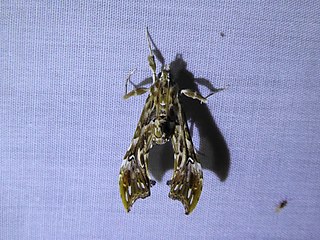Related Research Articles
Microsoft Windows, commonly referred to as Windows, is a group of several proprietary graphical operating system families, all of which are developed and marketed by Microsoft. Each family caters to a certain sector of the computing industry. Active Microsoft Windows families include Windows NT and Windows IoT; these may encompass subfamilies,. Defunct Microsoft Windows families include Windows 9x, Windows Mobile and Windows Phone.

Linux is a family of open-source Unix-like operating systems based on the Linux kernel, an operating system kernel first released on September 17, 1991, by Linus Torvalds. Linux is typically packaged in a Linux distribution.
Android is a mobile operating system based on a modified version of the Linux kernel and other open source software, designed primarily for touchscreen mobile devices such as smartphones and tablets. Android is developed by a consortium of developers known as the Open Handset Alliance and commercially sponsored by Google. It was unveiled in November 2007, with the first commercial Android device launched in September 2008.

Agylla is a genus of moths in the subfamily Arctiinae. The genus was erected by Francis Walker in 1854.

Rhectosemia is a genus of moths of the family Crambidae described by Julius Lederer in 1863.
Tympanobasis is a genus of moths of the family Noctuidae. The genus was erected by George Hampson in 1926. The three described species live in Central America.

Heterusia is a genus of moths in the family Geometridae first described by Jacob Hübner in 1827–31. The genus is confined to the Americas.
A cryptocurrency is a digital asset designed to work as a medium of exchange wherein individual coin ownership records are stored in a ledger existing in a form of computerized database using strong cryptography to secure transaction records, to control the creation of additional coins, and to verify the transfer of coin ownership. It typically does not exist in physical form and is typically not issued by a central authority. Cryptocurrencies typically use decentralized control as opposed to centralized digital currency and central banking systems. When a cryptocurrency is minted or created prior to issuance or issued by a single issuer, it is generally considered centralized. When implemented with decentralized control, each cryptocurrency works through distributed ledger technology, typically a blockchain, that serves as a public financial transaction database.
Agylla tumidicosta is a moth of the family Erebidae. It was described by George Hampson in 1900. It is found in Guatemala.
Rhectosemia antofagastalis is a moth in the family Crambidae. It was described by Munroe in 1959. It is found in Chile.
Rhectosemia braziliensis is a moth in the family Crambidae. It was described by Munroe in 1959. It is found in Brazil.
Rhectosemia nomophiloides is a moth in the family Crambidae. It was described by Munroe in 1959. It is found in Bolivia.
Rhectosemia striata is a moth in the family Crambidae. It was described by Munroe in 1959. It is found in Mexico (Chiapas).
Rhectosemia viriditincta is a moth in the family Crambidae. It was described by Munroe in 1959. It is found in Brazil and Costa Rica.
Rhectosemia argentipunctalis is a moth in the family Crambidae. It was described by Herbert Druce in 1895. It is found in the Mexican state of Veracruz and Guatemala.
Rhectosemia compositalis is a moth in the family Crambidae. It was described by Schaus in 1912. It is found in Costa Rica.
Rhectosemia excisalis is a moth in the family Crambidae. It was described by Snellen in 1900. It is found in Argentina.
Rhectosemia longistrialis is a moth in the family Crambidae. It was described by Paul Dognin in 1904. It is found in Ecuador.
Rhectosemia multifarialis is a moth in the family Crambidae. It was described by Julius Lederer in 1863. It is found in Venezuela, Brazil, Mexico and Costa Rica.
Rhectosemia vau-signalis is a moth in the family Crambidae. It was described by George Hampson in 1918. It is found in Peru and Bolivia.
References
- ↑ Nuss, M.; et al. (2003–2014). "GlobIZ search". Global Information System on Pyraloidea. Retrieved July 15, 2014.
- ↑ "Taxonomy Browser: Rhectosemia tumidicosta". Barcode of Life Data System. Retrieved November 1, 2018.
| This Lineodini-related article is a stub. You can help Wikipedia by expanding it. |